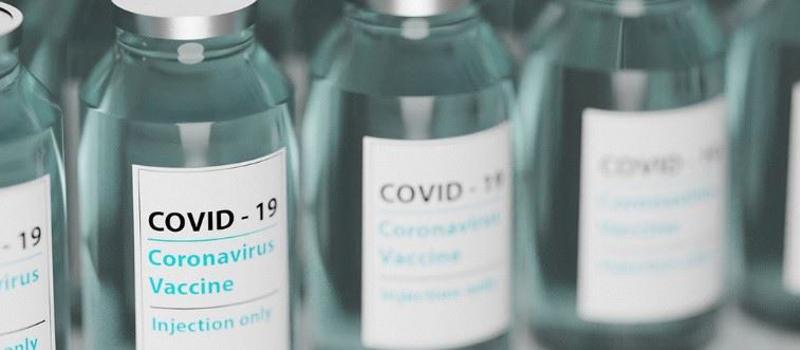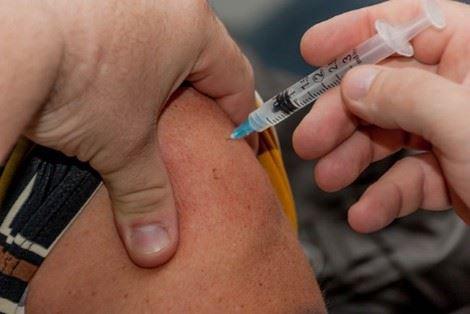How Did We Get a COVID-19 Vaccine So Fast, But We Are Still Waiting on a Lyme Disease Vaccine?
Posted by Mosquito Squad
December 20, 2023
The long and controversial history of vaccine development impacts the response to Lyme disease.
The transmissibility, deadliness, and worldwide spread of the COVID-19 virus certainly warranted the expedited work to create a vaccine in record time. Nevertheless, with its release, questions are arising around the development of other vaccines that could improve and save lives. The Lyme disease vaccine has been one shrouded in controversy, but still we ask, what is taking so long to get an approved and available Lyme disease vaccine that works?
Need-Based Vaccine Development
The difference between a pandemic (COVID is a pandemic) and an epidemic is geography. A pandemic spreads across multiple countries or continents, whereas an epidemic is an outbreak affecting a community or region. In 2015, health officials in the state of Massachusetts declared Lyme disease an epidemic. Because Lyme does NOT spread by human-to-human transmission, it does not travel as quickly as COVID-19. While Lyme disease is a growing problem in many areas, a deadly worldwide disease certainly has a stronger sense of urgency.
The development of a Lyme disease vaccine has been in progress since the 1970s and 80s. What is taking so long?
The History of the Lyme Disease Vaccine

In 1998, SmithKline Beecham released LYMErix, a three-shot vaccine that was 80% effective and approved by the Federal Drug Administration (FDA).
Unfortunately, the LYMErix vaccine release coincided with publishing a now-retracted study claiming a link between vaccines and autism. This false claim published in 1998 was the very early days of the current anti-vaccination movement.
A few FDA panel members that approved LYMErix had voiced a theoretical concern about a suspected link between LYMErix and arthritis. However, there was no evidence in the clinical trials, so the Lyme vaccine was approved. As distrust in vaccines grew, the public got wind of this concern. Then a 2000 study with hamsters found the LYMErix Lyme vaccine contributed to autoimmune arthritis in hamsters. Shortly after that, some vaccine recipients complained about joint pain.
In the end, the vaccine was pulled from the market, the manufacturer settled a class-action lawsuit, and the FDA investigated the claims. No connection between the Lyme vaccine and arthritis was ever found. “The arthritis incidence in the patients receiving Lyme vaccine occurred at the same rate as the background in unvaccinated individuals,” a 2007 paper in Epidemiology and Infection explains.
LYMErix was not a perfect vaccine. It was expensive. It only worked on the North American bacteria. It required three doses. Moreover, was not universally covered by health insurance. For those who have Lyme disease, those challenges might likely be a preferable alternative.
Litigation Slows Vaccine Research Development
Distrust of vaccines can be traced back to the 1700s when a smallpox epidemic threatened the United States Army during the Revolutionary War. The method of immunization (called “variolation”) at the time was not as safe as today’s vaccines. Still proven effective, George Washington eventually required new soldiers to be vaccinated for smallpox.
Thanks to mass implementation, vaccines eventually eradicated smallpox globally and later polio in the United States. However, during the polio vaccine rollout, a manufacturing flaw led to over 200,000 children immunized with a live, viable virus. The result was 40,000 cases of polio, 200 of which caused paralysis, and ten leading to death.
Tighter federal regulations, improved production processes, and more rigorous safety testing were implemented, and polio vaccinations continued with great success.
However, litigation around the smallpox vaccine mistake set the stage for pharmaceutical and biotech companies to face serious liability risks. The ongoing lawsuits against these companies in the 70s and 80s meant that pharmaceutical companies pulled back from vaccine research and manufacturing. Shortages in supply for many critical childhood vaccines became an ongoing issue.
Congress enacted some protections to shield these companies and encourage more research, but it has been a lengthy recovery period. For years there were frequent shortages in flu vaccines, tetanus vaccines, and meningitis vaccines. Only through urgency and need has the industry turned around but still has a history to overcome.
Current Lyme Disease Vaccine News
In the spring of 2020, Pfizer and Valneva (a French biotech company) struck a $308 million deal to commercialize Valneva’s Lyme disease vaccine. Still in development, they expect to bring the promising new Lyme vaccine to market in 3-4 years.
Valneva began working on VLA15, their Lyme disease vaccine, in 2012. The vaccine targets six of the most common bacteria that cause Lyme, and was given fast-track designation in 2017 by the FDA.
The VLA15 vaccine is nearing the last portion of phase two study, with hopes of entering the critical phase 3 study thereafter. The current stage of phase two will include 600 participants, ages 5 years and up. The main readout of safety and immune response level will be at month seven. Participants will be observed for three years to monitor the persistence of antibodies.
At Mosquito Squad of Southeastern Massachusetts, we are hopeful that a vaccine to prevent Lyme disease in humans is on the horizon. In the meantime, we encourage you to take tick safety precautions when out in untreated areas. And for your own property, choose Mosquito Squad. Our tick control services are an excellent way to reduce ticks in your yard.
